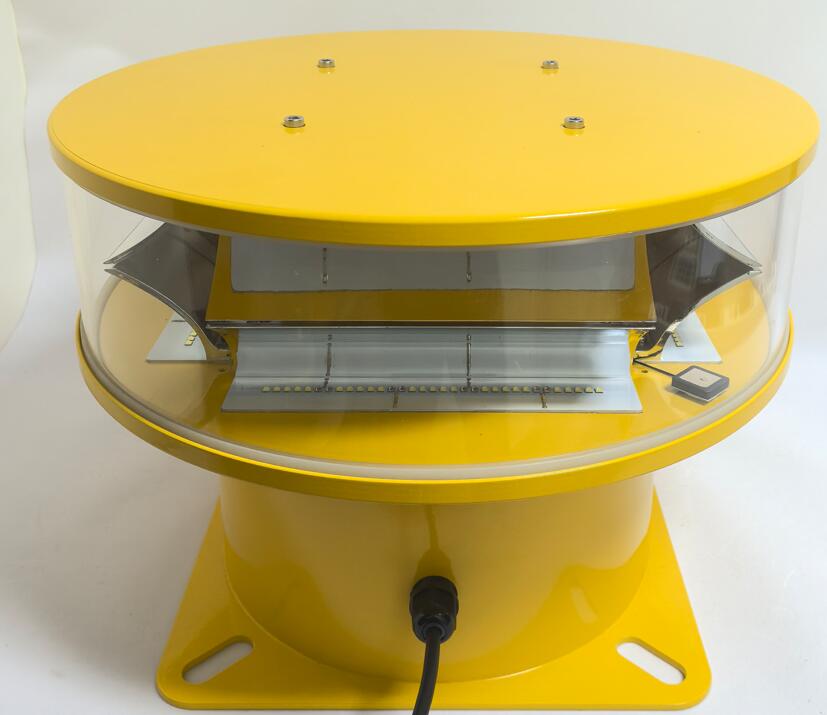Illuminating Safety: The Critical Role of Obstruction Lights in Modern Infrastructure
In the ever-evolving landscape of modern infrastructure, the importance of safety cannot be overstated. Among the myriad of safety measures, obstruction lights stand out as a crucial component, ensuring the visibility of tall structures and preventing potential hazards. These lights, often overlooked, play a pivotal role in safeguarding both human lives and expensive equipment, particularly in the aviation and construction industries.
The Essence of Obstruction Lights
Obstruction lights are specialized lighting systems designed to mark the presence of tall structures, such as buildings, towers, wind turbines, and cranes, that could pose a risk to low-flying aircraft. These lights are typically installed at various heights on the structure, creating a visual warning system that is especially critical during nighttime or in conditions of reduced visibility, such as fog or heavy rain.
The primary function of obstruction lights is to alert pilots to the presence of obstacles, allowing them to navigate safely around these structures. Without these lights, the risk of collisions would increase significantly, potentially leading to catastrophic accidents. Therefore, obstruction lights are not just a regulatory requirement but a fundamental aspect of aviation safety.

Types of Obstruction Lights
There are several types of obstruction lights, each serving a specific purpose based on the height and location of the structure. The most common types include:
Low-Intensity Obstruction Lights: These are used for structures that are less than 45 meters in height. They emit a steady red light and are typically installed on structures like small buildings or communication towers.
Medium-Intensity Obstruction Lights: These lights are used for structures between 45 and 150 meters in height. They can emit either a steady red light or a flashing white light, depending on the specific requirements of the location.
| obstruction light |
High-Intensity Obstruction Lights: These are reserved for the tallest structures, exceeding 150 meters in height. They emit a powerful flashing white light that can be seen from great distances, ensuring maximum visibility for aircraft.
Regulatory Standards and Compliance
The installation and operation of obstruction lights are governed by strict regulatory standards set by aviation authorities worldwide. In the United States, the Federal Aviation Administration (FAA) mandates the use of obstruction lights on any structure that exceeds a certain height, typically 200 feet above ground level. Similarly, the International Civil Aviation Organization (ICAO) provides guidelines that are adopted by many countries to ensure uniformity in safety measures.
| obstruction lights |
Compliance with these regulations is not optional; it is a legal requirement. Failure to install and maintain obstruction lights can result in hefty fines, legal liabilities, and, most importantly, increased risk of accidents. Therefore, it is imperative for structure owners to adhere to these standards and ensure that their obstruction lights are functioning correctly at all times.
Technological Advancements in Obstruction Lights
As technology continues to advance, so do the capabilities of obstruction lights. Modern obstruction lights are equipped with energy-efficient LED bulbs, which not only reduce power consumption but also offer longer lifespans compared to traditional incandescent bulbs. Additionally, many obstruction lights now come with built-in monitoring systems that can detect faults and send alerts to maintenance teams, ensuring that any issues are addressed promptly.
Solar-powered obstruction lights have also gained popularity, particularly in remote locations where access to electricity is limited. These lights harness solar energy during the day and use it to power the lights at night, offering a sustainable and cost-effective solution.
The Future of Obstruction Lights
As urban landscapes continue to grow, with skyscrapers reaching unprecedented heights, the role of obstruction lights will become even more critical. The integration of smart technologies, such as IoT (Internet of Things), could revolutionize the way obstruction lights are monitored and maintained. Imagine a network of obstruction lights that can communicate with each other, automatically adjusting their intensity based on weather conditions or the presence of nearby aircraft.
Moreover, the development of more advanced lighting systems, such as those incorporating laser technology, could further enhance the visibility of obstruction lights, making them even more effective in preventing accidents.
In conclusion, obstruction lights are an indispensable component of modern infrastructure, playing a vital role in ensuring the safety of both aviation and ground operations. As technology continues to evolve, so too will the capabilities of these lights, offering even greater levels of safety and efficiency. It is essential for structure owners, regulatory bodies, and technology providers to work together to ensure that obstruction lights remain a reliable and effective safety measure in the years to come. The skyline of the future will undoubtedly be illuminated by these critical lights, guiding aircraft safely through the night and preventing potential disasters.
